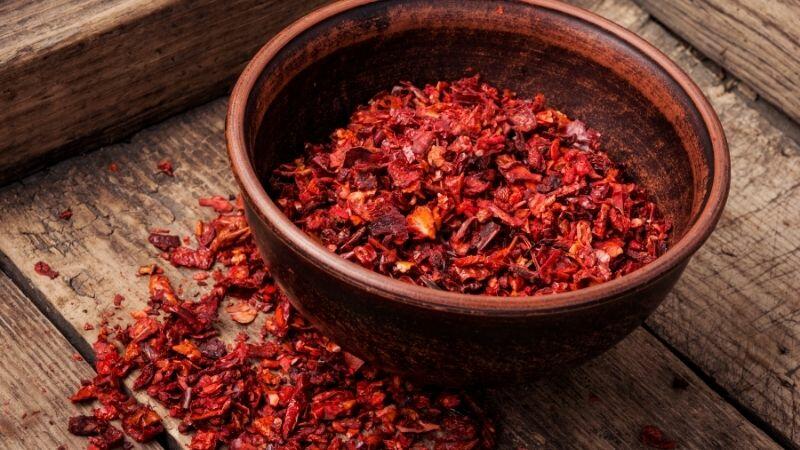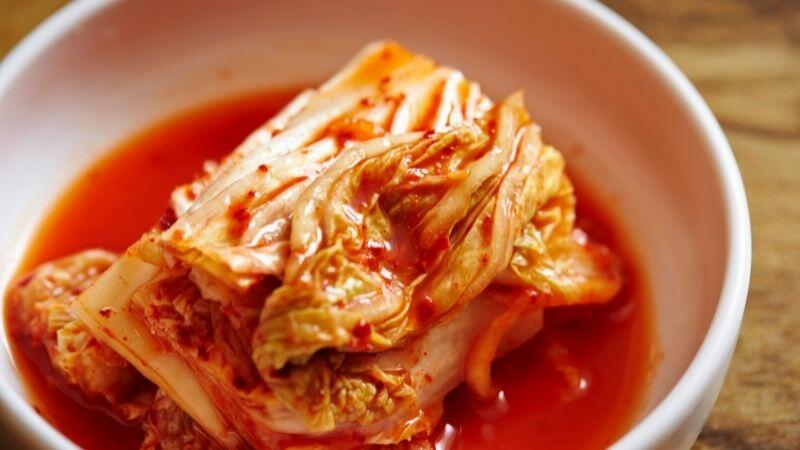Kimchi is a staple Korean side dish made from fermented cabbage, radish, and various seasonings. But the big question is – how spicy should your kimchi be? Some like it fiery hot, while others prefer a milder kick. So how do you know what level of heat is right for you?
In this comprehensive guide, we’ll walk you through everything you need to know about the spiciness of kimchi. We’ll cover what makes kimchi spicy, regional variations, how to adjust the
What Gives Kimchi Its Signature Spice

The key ingredients that give kimchi its spicy zing are:
- Korean Red Pepper Flakes – These dried and crushed chili peppers add a distinct heat and red hue to kimchi. The amount used greatly impacts spiciness.
- Gochujang – A savory and pungent fermented Korean chili paste. It packs some serious
spice power! - Garlic – While garlic lends a pungent aroma, it also enhances spiciness. More garlic equals more heat.
- Ginger – Ginger adds a refreshing zest and a warming bite to kimchi. Use sparingly to prevent overpowering
spice . - Fermentation – The longer kimchi ferments, the spicier it gets! The process intensifies flavor.
So in summary, garlic, ginger, fermentation time, and specially Korean red pepper can turn up the heat. But you’re in control – adjust ingredients to customize
Regional Kimchi Spiciness Variations
One kimchi recipe does not fit all. Based on local tastes, kimchi
North Korea
- Focused on cabbage and radish kimchi.
- Very strong red pepper flavor for intense, lasting heat.
South Korea
- Broader range of recipes like green onion kimchi.
- Spice levels differ by province.
Gyeongsangbuk-do
- Known for extra spicy kimchi with serious kick from fresh pepper flakes.
Jeolla
- Milder and subtly sweet from using ripe pepper flakes.
Seoul
- Balance of gentle
spice and subtle sweetness for a rounded flavor.
So feel free to explore regional recipes until you find your kimchi match made in heaven!
Finding the Right Kimchi Fermentation Time
Fermentation is key to developing the unique flavor of kimchi. But how long should you ferment it for ideal taste? Here’s a guide to fermentation times and how they affect kimchi
- 1-3 days – Produces very mildly tangy and spicy kimchi. Cabbage retains crunch.
- 4-7 days – Kimchi develops moderate sourness and
spice . Cabbage softens slightly. - 1-2 weeks – Peak fermentation time for proper tang and robust spiciness. Cabbage is tender.
- 3-4 weeks – Very sour, fully fermented kimchi with intense
spice . Cabbage is soft. - Over 1 month – Kimchi starts losing its vibrancy. Can become overly soft and faded.
So for the best balance of flavor, aim for 1-2 weeks of fermentation. This gives you that perfect punch of tangy
How to Make Your Kimchi as Spicy as You Like It
Don’t settle for store-bought kimchi that misses the mark on
For Spicier Kimchi:
- Use more Korean red pepper flakes and garlic.
- Add spicy Korean chili paste like gochujang.
- Let it ferment longer to develop that bold burn.
For Milder Kimchi:
- Cut back on red pepper flakes and garlic.
- Add ginger, fruit, and vegetables to balance flavor.
- Ferment for less time to temper the heat.
- Blend in dairy like yogurt to mellow it out.
So unleash your inner chef and DIY the kimchi of your dreams!
Creative Ways to Enjoy Kimchi
Half the fun of kimchi is finding new ways to enjoy its unique zesty goodness in meals.
Here are some inventive ideas to inspire you:
- Kimchi Pancakes – Mix kimchi into fluffy savory pancakes.
- Kimchi Fried Rice – Give fried rice fabulous flavor with some diced kimchi.
- Kimchi Quesadillas – Spread kimchi inside quesadillas for some heat.
- Kimchi Deviled Eggs – Stir spicy kimchi into creamy deviled egg filling.
- Kimchi Grilled Cheese – Add sliced kimchi to grilled cheese sandwiches.
The possibilities are endless when you think outside the box! Dive in and get creative with kimchi recipes.
Tips for People with Different Spice Tolerances
Kimchi
If kimchi is too spicy:
- Use less red pepper flakes and garlic when preparing it.
- Opt for milder white kimchi made without
spice . - Balance the heat by pairing kimchi with cooling foods like avocado and cucumber.
If you want an extra kick:
- Slowly add more Korean red pepper flakes over time.
- Use small amounts of hot sauces like sriracha.
- Cook kimchi less to preserve its raw
spice .
So don’t miss out on amazing kimchi – just tweak it to suit your preferences!
Frequently Asked Kimchi Spice Questions
Still hungry for more kimchi knowledge? Here are answers to some burning questions on kimchi heat:
Is kimchi supposed to be spicy?
Traditional kimchi calls for
How do I make my kimchi spicier or less spicy?
To amp up the heat, add more red pepper flakes and garlic. For milder kimchi, use less
What’s the difference between fresh and aged kimchi?
Fresh kimchi is very spicy and sour from recent fermentation. Aged kimchi has mellower
Can I add other spicy ingredients like jalapeños?
You sure can! Feel free to experiment with spicy additions like jalapeños, hot sauce, and more.
What are good tips for kimchi beginners?
Start with a small taste of milder white or green onion kimchi first. Then work your way up to spicier red kimchi. Slow and steady!
So don’t be shy – ask any other kimchi questions your heart desires!
Time to Give Kimchi a Taste
Are you now ready to dive into the addictive flavors of kimchi? Start slowly with mild kimchi and work your way up to spicier varieties. Don’t be afraid to customize recipes to suit your heat preferences. With so many tasty ways to enjoy kimchi, your tastebuds will thank you!
What are you waiting for? Grab some fresh cabbage and red pepper flakes and embark on your own lively kimchi-making adventure. Just be prepared to become completely hooked on kimchi’s signature combo of





